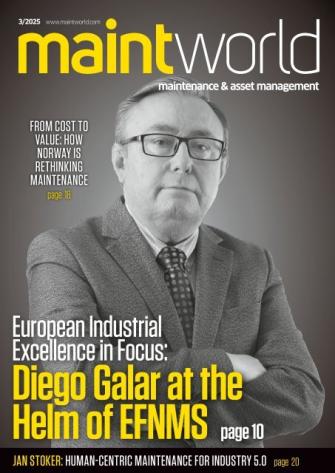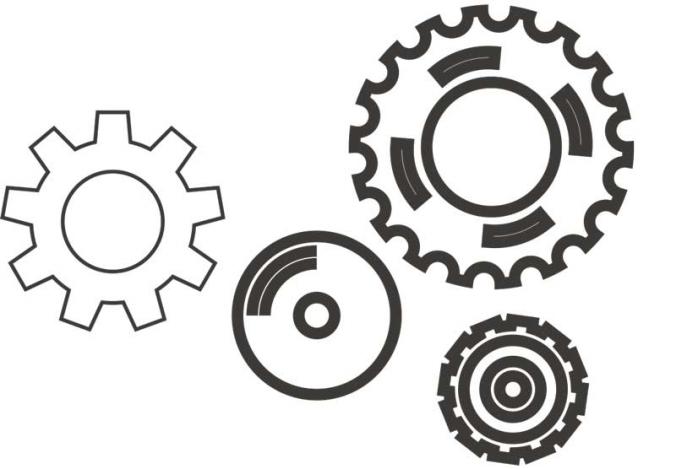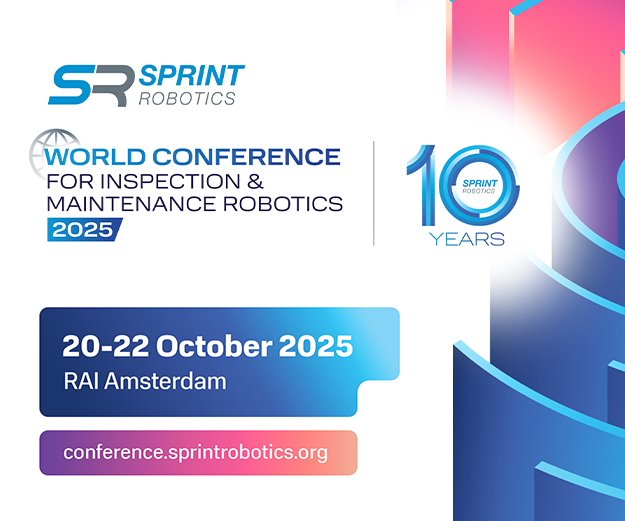Disaggregated Asset Structure and Taxonomy
The adequate management of the life cycle of an organization's assets is a fundamental element to guarantee that it can generate value through its assets, and that they can contribute in a sustained way to the achievement of the objectives in order to reach the profitability levels established by the direction.

Having said that, it is important to mention that establishing a robust base that sets the standard and facilitates
the management of the organization's assets in an agile manner is an excellent starting point. Therefore, establishing a clear disaggregated asset structure and an adequate taxonomy from the early stages of the life cycle will facilitate the handling and management of information on these assets, contributing to the management of risks (ISO 31000) during the entire life cycle.
The management of the risks inherent to the assets is part of those key processes on which the organizations must direct their efforts, so, making it one of the differentiating elements, allowing them three great benefits; sustainability, competitiveness in the market and finally to generate the value (to make profitable) the actions carried out on the assets.
The adequate management of the risks associated with the assets is decisive for making the best decisions from the point of view of maintenance: Establishment of policy, definition of strategies, development of plans, determination of quantities and types of spare parts to be kept in stock and development of staff skills, among others.
Therefore, this article seeks to establish some guidelines to carry out an adequate disaggregated structure of assets and their correct taxonomy that facilitates the management of life cycle information.
Disaggregated Asset Structure and Taxonomy
Asset taxonomy is defined according to ISO 14224(2016) as the systematic classification of assets into generic groups based on possible common factors in various systems. On the other hand (Crespo, et al.2016), it is claimed that the physical structure is the most intuitive way to observe the reality of the system. In the physical structure the system belongs to the plant, an installation, an industry, etc., and has different subsystems and components.
There is an additional point of great importance, as he states (Ciliberty, 2014), that there is that a clear disaggregated asset structure which facilitates the management of the information system (EAM / ERP) associated with the assets, representing the systems in assets, the subunits of assets and their components through maps.
This clear hierarchy of classification and functional locations within the organization facilitates the management of maintenance information and also provides multi-level fault reports.
Therefore, establishing a clear and ordered taxonomy of the assets, allows to obtain a description of the limits and border of these within the systems, and it is essential for effect, to obtain the necessary information, as well as for the analysis of the data of the maintenance and the reliability in any type of industries, plants or intensive organization in assets. In addition, it facilitates communication and interaction between all enabling areas and those who exercise actions on assets that can impact the generation of value of the organization.
Additionally, in requirement 7.5. Information required for Asset Management, the standard (ISO 55001,2014), states the following:
- “The organization must determine:
- The attribute requirements of the identified information;
- The quality requirements of the identified information;
- How and when to collect, analyse and evaluate the information”.
The organization must specify, implement, and maintain processes to manage its assets information;
It can be stated then, that seen from this perspective, the correct identification and registration of assets is one of the first and fundamental actions that any asset-intensive organization can undertake, since in this way the necessary information can be obtained and documented to answer the following questions:
- What is my organization's asset inventory?
- What is the current status of my assets?
- Where are they located?
- What type of interventions, types of maintenance and costs are associated with the assets?
- Is it possible to establish replacement strategies for the assets?
In addition (Kleinhammer,2014), states that this taxonomy, or mode of classification and identification, is influenced by the data analysis protocols used to derive aggregate reliability performance parameters based on similar equipment types and failure modes from multiple data sources.
From this point of view, it means that an adequate taxonomy has a positive impact on the collection of data and storage of the information necessary for the management of the information of the life cycle of the assets.
Therefore, it is possible to say that taxonomy allows for the establishment of a hierarchical structure based on factors possibly common to several of the assets such as (location, use, subdivision of asset, etc.), as shown in figure.1,
according to ISO 14224,2016.
Benefits and Interrelations of the Taxonomy with the Different Enabling Areas of the Organization
An adequate taxonomy of assets allows to obtain some competitive advantages, related to the facility of interaction and fluidity of the information. it is necessary to clarify that this will be fulfilled, as long as the information documented and registered is reliable and of quality; some of the areas of the organization that will benefit from it are the following:
Planning and Scheduling
Management and administration of maintenance activities (work orders,
requests for services and purchases), cost management, cataloguing of spare parts, management of indicators, KPI, history of interventions, etc
Maintenance and Reliability Engineering
Optimization of maintenance plans through the use of methodologies such as RCM, FMECA, RBI, statistical loss analysis, root cause analysis, use of historical information for reliability simulations (RAM), establish asset replacement strategies.
Execution of Maintenance
Work Order deliveries, field notification generation, Work Order feedback Segmentation by assets the costs associated with maintenance.
Operations
Generation of Work Order requests by the user (operators), direct interaction with maintenance, unique identification for each active
Finance
Support in the financial management of the life cycle costs of assets: IAS 16, IAS 36 (Revaluation of assets, etc.), divestitures, obsolescence, etc.
Where Do I Get the Information for Proper Registration?
- Asset Drawings and Systems
- Layout
- Manufacturers Manual
- Technical Specification Sheets
- P&ID
- Photos and videos of equipment
- in the field
- Other sources of information.
It is important to point out that the taxonomic identification of the assets is normally defined by the organizations. On the other hand, the ISO 14224-2016 standard provides a reference framework for the assignment of unique codes for each asset within the management system, and this can be applied to different types of industries. That this type of taxonomic structure however, does not apply to the electricity generation industry that generally uses the KKS system.
How Far to Disaggregate the Asset Structure of the Organization?
It is important to point out that in consulting processes carried out by our organization, we have had the opportunity to find organizations that have their processes of disaggregation of assets thoroughly documented and clear. However, we have found many organizations that classify maintainable parts or re-changes (bearings) as an asset; this can be considered a conceptual error, since this distorts the information to be recorded within the information system for the purpose of further analysis.
While it is true that there are some particular criteria, depending on the type of organization, especially for those changeable parts that have a high impact on costs and a special process of manufacture, these are usually considered as assets. As an example, we can mention, a turbine blade.
In the figure. 2. We share a disaggregated asset structure up to level 6.
The different levels of the asset structure or how far to disaggregate the organization's assets will depend largely on the size of the organization and how easily the associated information is managed.
The appropriate disaggregated structure of the asset facilitates the interaction and fluidity of the information needed to control and monitor the asset maintenance management, provided the information documented and recorded is reliable and of good quality.
Conclusions
A clear and adequate disaggregated structure of the organization's assets and their correct identification (Taxonomy), according to international standards, is the fundamental principle of a system
for the asset information management.
The correct allocation of costs associated with the life cycle of assets is fundamental to establish strategies for asset replacement.
An adequate structure disaggregates assets, facilitates the implementation of reliability tools and contributes to improve the control of data and information of the equipment.
It is necessary to establish an adequate hierarchy of assets from the early stages of the project as part of reliability tools that allow managing the information of the assets to increase their useful life.










![EMR_AMS-Asset-Monitor-banner_300x600_MW[62]OCT EMR_AMS-Asset-Monitor-banner_300x600_MW[62]OCT](/var/ezwebin_site/storage/images/media/images/emr_ams-asset-monitor-banner_300x600_mw-62-oct/79406-1-eng-GB/EMR_AMS-Asset-Monitor-banner_300x600_MW-62-OCT.png)




